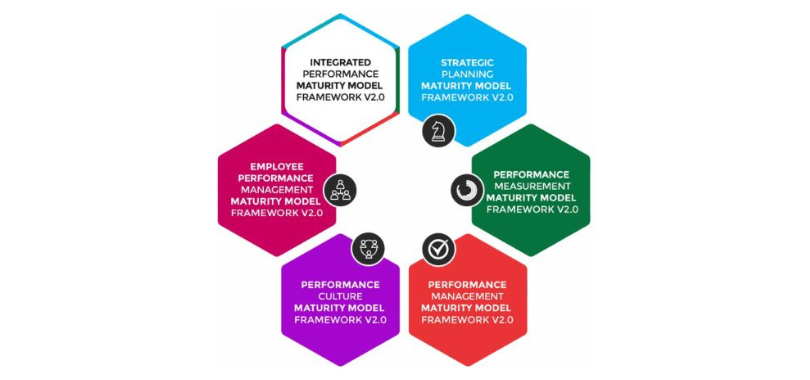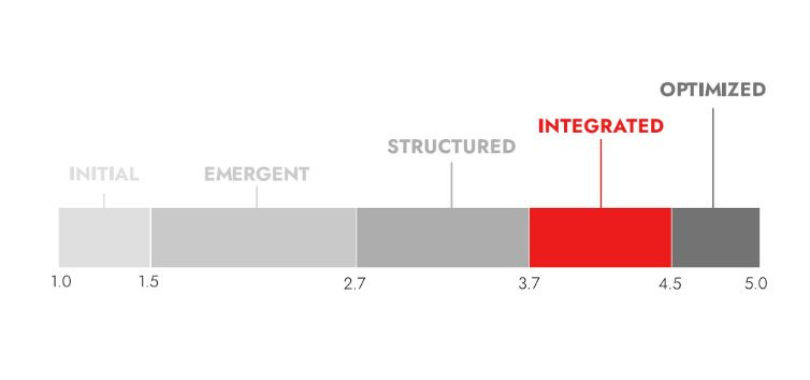Is the Pay-for-Performance Scheme in the Public Sector Effective?

Image source: rawpixel.com via freepik
How effective is the pay-for-performance scheme in the public sector? Most civil servants working in public administrations worldwide before the 1980s had a salary system built upon seniority and length of service. The basis for career advancement did not look into the performance of the position holder.
During the 1990s, the tendency to change the payment systems was born, and the direction sought was to look into individual performance but only for senior public service officials and middle managers. What fueled the change was the need to fill in the gap between the salaries of managers in public service and those who served in the private sector so they could attract and retain private sector managers in public administration. Moreover, the focus was essentially on improving the motivation and accountability of civil servants.
However, in most European countries, there was little introduction to performance-related pay for non-managerial positions in civil service. The conclusion drawn by the European Public Administration Network was that the staff’s motivation could have improved. Given that only those achieving outstanding performance were entitled to a bonus–perhaps due to the efficiency of government spending, the employees found the schemes de-motivating. This caused jealousy and led them to blame the appraisal system.
Rigid pay systems began to be called into question to thrust into light the public value system and be able to compete with the private sector. By the 2000s, a significant number of civil servants were covered by various flexible payment arrangements. In other words, seniority was replaced by non-bureaucratic criteria such as job content, qualifications, competencies, and individual performance.
Read More: Designing Efficient Individual Performance Management Systems
Pay-for-Performance Scheme in the Public Sector
A controversial function under Human Resources Management is the individual staff performance appraisal with a pay-for-performance (PFP) scheme, which became popular among practitioners and academics in the New Public Management (NPM) wave. The public sector was responsive to change and complemented career-based pay with PFP models to reach soaring levels of attractiveness. Then, the NPM trend was established. There are two perspectives in analyzing the effect of monetary rewards or the efficient use of assets on the public sector.
The Standard Economic View is grounded on the notion that performance is positively related to effort, so outstanding performance should be rewarded. According to Victor Harold Vroom’s Expectancy Theory, there are three major elements of employee motivation. First is expectancy — an employee is motivated due to thinking that effort leads to “acceptable performance.” Second is instrumentality — meaning the “performance will be rewarded.” Lastly, the valence — “the value of the rewards is highly positive.”
Vroom saw the connection of these elements in motivating employees and provided guidelines on employee effort-to-performance expectancy, performance-to-reward expectancy, and valences of reward, which leaders will play an essential role in implementing.
- Effort-to-performance expectancy – Leaders should provide all the training and support for their employees to be effective at work and be open to employees’ suggestions about innovative ways of getting their job done. Moreover, leaders should set expectations while helping employees achieve certain performance levels.
- Performance-to-reward expectancy – This is where PFP will emerge. Leaders should establish with their employees that good performance will be rewarded. With this, the process of the reward mechanism should be strengthened. Performance should be accurately measured, and reward will be based on the result.
- Valences of rewards – Rewards given to the employees should be diverse, with some preferred promotion, salary increase, or vacation leave credits. Leaders should make an effort to increase the expected value of rewards associated with their performance expectations.
The advantage of this approach is that weak performers are identified through financial incentives, and their performance is assessed through KPIs and targets, resulting in increased productivity and efficiency levels.

Image source: freepik
The Cognitive Psychology View takes heed of the two kinds of motivation: intrinsic and extrinsic. The first type of motivation looks for joy, satisfaction, and a sense of duty in the activity, rather than the external pressures or rewards, such as money or promotions and benefits, which the second type does.
Understanding workplace motivation is a critical component of achieving a dynamic work environment that enriches and fulfills employees. Based on Rajesh Singh’s study, “The Impact of Intrinsic and Extrinsic Motivators on Employee Engagement in Information Organizations,” managers must understand that intrinsic factors play a more significant role in motivating employees and investing more in building a culture of respect, appreciation, honesty, and individual freedom when reshaping their management approaches in tapping their employees’ emotion.
Literature, such as “Crowding Out Intrinsic Motivation in the Public Sector” written by Yannis Georgellis, Elisabetta Iossa, and Vurain Tabvuma, shows that public servants tend to be more intrinsically motivated than private sector employees. That is why the motivation of public employees might decrease when extrinsic rewards are introduced.
Read More: Performance Related Pay Schemes in the British Public Service
Pay-for-Performance Schemes in Public Administration
According to a report issued in 2020 by the European Commission called “Pay-for-Performance in the civil service of the EU,” the monetary rewards are emphasized through a variety of economic forms that depend on several factors:
* Whether the performance of individuals is tracked
Individual performance can be approached in different ways. Traditionally, performance was scored on a scale based on a set of criteria and indicators, thus, leading to a differentiation of public servants into multiple performance categories. The modern way to register it is through regular performance appraisals in which employees ought to meet objectives’ targets within a certain timeframe. Crossing from output measures towards performance appraisals made the process more enchanting for the public system employees as they felt that they are part of a less rigid rating system that was qualitatively addicted. Some examples in this area are Estonia, Greece, and France, which gave up on explicit numerical rankings. Whereas Denmark and Finland have decentralized the decision regarding the rating system used to the organizational level.
According to a European Public Administration Network (EUPAN) survey (Staronova, 2017), only two countries reported using a quota system, Malta and Latvia. However, the purpose of it is to use it as a guideline only and not a strict requirement. Germany uses quotas only for the top performers in order to better differentiate them per category.
Part of the modern trend of performance instruments may be encountered in the self-assessment, together with the performance interviews. The methods are established through intrinsic motivators, like professional development opportunities or quality connections.
* The size and forms of payment (base pay, one-time bonuses, or a combination of the two)
Most of the time, the typical merit scheme links individual performance to annual salary raises. The computation is either as a percentage of base pay (3-10%) or a variable merit increment. Another form of it is granting a lump sum bonus. Some countries, such as Slovakia and Lithuania, offer a “pay promotion” that is tied to performance appraisal and a career promotion that assumes a change in rank.
Modern pay systems abandon the automatic pay progression and embrace the flexible PFP regimes under which annual evaluations and regular check-ins build the civil servant’s profile for a higher chance towards career advancement or bonus payment. According to the EUPAN 2017 survey, Portugal is an example of salary progression, as a public employee with an excellent performance score stays in the queue, alongside other high-performing candidates waiting for the managerial decision to give employees a bonus. Meanwhile, if other colleagues of a public employee that await in line accumulated an increased number of points since the last change of pay, they are entitled to the bonus.
Pursuant to “Pay-for-Performance in the civil service of the EU” developed by the European Commission, most Central European countries punish poor performers by decreasing their salaries or withdrawing the financial rewards. Others, like Malta and Belgium, chose to reflect the punishments on career progression by freezing it or even introducing the possibility of being downgraded.
Modern Performance Management Trends
More and more EU countries started to adopt PFP schemes in the public systems as they scrapped its controversial reputation and took heed of overall motivation, communication, and relations within the administration. Several key trends made it easier for financial schemes to be integrated into the organizational managerial culture:
- Feedback and continuous discussion – Regular check-ins on results and competencies development represent a key trend within employee performance management. Mixing monetary incentives with non-monetary ones increases the changes in individuals’ motivation to reach new peaks. Annual appraisals performed in isolation are not the key to objectives achievement or performance of any kind. However, combined with ongoing feedback or performance interviews between superiors and civil servants creates common meaning and prepares them for the yearly evaluation. In the Swedish public administration, employees discuss goals and work-related issues with the manager, and they are aware of how payment is set and how they can increase their share.
- Self-assessment – In order to involve and obtain civil servants’ input, they are required to perform self-evaluations. Shared insights of civil servants on how the job can be carried out effectively bring a valuable contribution to how they perceive appraisals, requirements, and opportunities for professional development. In Slovakia, this factor is introduced as a voluntary tool, while in Italy, the method is used for both supervisors and senior civil servants. In Portugal, self-assessment is compulsory to be carried out.
- Competency-based approach – This takes into consideration technical skills and behavior patterns that put an apprentice on how individuals do their jobs. Moreover, the focus is on how civil servants contribute to the overall administration’s mission. According to a EUPAN survey (Staronova, 2017), in the past decade, the number of countries that adopted competency frameworks doubled. Supervisors believe that the policy contributes to the public sector’s performance by a vertical alignment of people’s competencies to the mission and vision.
Read More: This is How Norway is Inspiring Trust in Government
Considering the current labor market challenges, pay-for-performance schemes need to be strategically planned to look into both the cost-effectiveness related to employment and the outcomes that support public employment services. The rule that undergoes tight budgets is to do more with less, thus implementing cost-effectiveness measures might provide comparative information on the labor market cost. Performance management should be linked to high-quality HR practices, in which individual, team effort, ongoing coaching, targeted training, and recognition are well-settled. Moreover, the human resources practices available in the public sector have a demonstration effect across the entire local market. Performance management should be tailored to influence civil servants to meet local needs rather than to achieve set targets at any cost.
**********
Editor’s Note: The article originally appeared in the Issue No. 24 of Performance Magazine – Print Edition. The headline has been updated for better online readability and engagement.







